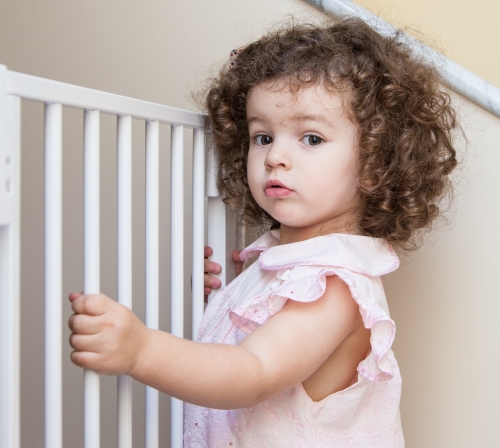If you are attempting to childproof your home, you likely know about outlet plugs. You have probably attached plastic locks to all your cabinets, rendering them inoperable by anyone – yourself included. And it’s possible you’ve developed an unnatural fear of window shade cords.
What you might not know is that you’ve only partially (and in the case of the safety locks, ineffectively) childproofed your home.
What I normally point out to parents is that to comprehensively childproof a home, they need to literally crawl around on their hands and knees and see the world from their 6- to 9-month-old’s perspective.
On all fours, that lampshade cord cascading down the side of the dresser suddenly looks inviting. The table cloth is just waiting to be tugged. And your bookcase is transformed into a ladder.
My advice for childproofing is to start before your child learns to crawl, and arrange your house so that it both protects your baby and makes your life as stress-free as possible.
Windows: You already know about window cords, but what about the window itself? Make sure there is no furniture under the window that your child can climb as he gets older. Windows and beds are a particularly bad combination. There have been reported cases of children jumping on the bed, and then jumping out the window!
Earthquake Proof: In Southern California a lot of us already attach bookcases and other large, heavy pieces of furniture to our walls, but anything that is loose is fair game for your tectonic toddler. Flat screen T.V.’s, for instance, are extremely easy to pull over. So if your T.V. isn’t mounted on a wall, make sure that the stand is secure and that your baby can’t pull or shake the T.V. on top of himself.
Hot Stuff: I don’t think ironing should ever be done when kids are home and awake. Why risk it? As for hair dryers and curling irons, make sure the cords stay on top of the counter and don’t loop down.
When you’re cooking, try to use the back burners of the stove and keep the handles facing inward. You can also remove the knobs of your gas stoves when not in use, to prevent your curious child from accidentally releasing gas into your home.
Poison Control: Most of us keep our cleaning products under the sink. That is the worst place to keep it if you have children. Baby proof locks serve to frustrate adults to the point that we either remove them or resent them. And particularly crafty toddlers have been known to outsmart them.
Instead, try rearranging your bathrooms, kitchens and laundry room so that anything that is breakable or dangerous (including cleaning agents and garbage bags) are placed on high shelves. Save the under-the-sink space and low cabinets and shelves for sponges, paper towels, pots and pans and other safer items.
The other important collection of dangerous items to remember is grandma’s purse. From grandpa’s heart medication to her own arthritis pills, grandma likely carries around with her a treasure trove of easy-to-open pill boxes. Make sure grandma keeps her purse on a high table, and that the straps don’t hang down.
As long as we’re talking drugs, this is a good time to rid your own medicine cabinet of unneeded and outdated medicine and transfer any drugs that are not in childproof bottles into plastic containers with hard-to-open latches.
Also, I recommend programming the number to California Poison Control into your phone: 800-222-1222.
And, as always, if you ever have any questions, be sure to ask your child’s pediatrician. We have seen just about every accident under the sun – and we’re here to help prevent them from happening to you.



